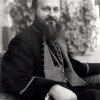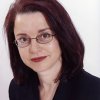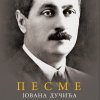Bishop Sava was born on April 13, 1930 in Senta. After graduating from secondary school he completed the St. Sava Seminary in Belgrade in 1950 and the Faculty of Orthodox Theology of the University of Belgrade in 1954. He did his postgraduate studies at the Old Catholic University in Bern, Switzerland. He obtained a Doctor of Divinity degree at the Faculty of Theology in Belgrade. His dissertation topic was “Typicon of the Archbishop Nikodim.”
He was professor at St. Sava Seminary in Belgrade prior to his election as a bishop. He received monastic vows at the Monastery “Vavedenje” (Entry of the Theotokos) in Belgrade on December 3, 1959. The monastic name he received was Sava. He was ordained hierodeacon on December 4, 1959. On June 3, 1961 he was ordained hieromonk. The Holy Bishops’ Assembly of the Serbian Orthodox Church elected him bishop on May 20, 1961 with title “vicar bishop of Moravica.” He was consecrated bishop on July 23, 1961 in the Patriarchal Cathedral in Belgrade by Patriarch German. Bishop Sava held the following positions: Professor of liturgies at the Theological College, member of the Orthodox Commission for Pan Orthodox Council, and representative of the Serbian Church for inter-confessional dialogues. The Bishops’ Assembly elected Bishop Dr. Sava on June 1, 1967 for a Bishop of the Eastern American and Canadian Diocese. He occupied this position until May 1977 when he was elected as Bishop of the diocese of Šumadija.
Immediately upon his installation in Cleveland, Bishop Dr. Sava began to devote himself to his work for the good of the Serbian Church in America. In the same year he divided the diocese into four deaneries, and mandated the use of correspondence protocol books and seals in all parishes and congregations. From the beginning he paid particular attention to church administration.
Bishop Sava guided the diocese for ten years as its bishop and, after his election as Bishop of Šumadija, for a year as its administrator. Constant work in this period of the diocese’s history resulted in the advancement of spiritual life in the diocese as well as work with both the youth and adults. Likewise much· was done to make the relationship of the bishop with his priests and with his people even more close, intimate, and dignified.
Much was also done to make the relations between the diocese and the church-school congregations more open and close. Bishop Sava was constantly traveling. Besides frequent visits to all the parishes and colonies in the United States, he traveled over the huge expanses of Canada. During his tenure eleven church-school congregations were founded while two others were re-activated. In this time eight churches, six chapels, four church schools, five church halls and five parish homes were consecrated or blessed.
In order to provide means for missionary activity and for the education of candidates for the clergy, a missionary-scholarship fund was established. From this fund newly formed congregations which needed aid were given a regular monthly stipend until they were able to get on their own feet. Aid and scholarships were also distributed from this fund to nearly all the theological students of the diocese. Bishop Sava ordained seventeen candidates to the diaconate, priesthood, or both orders. There were a total of 28 ordinations.
From the time of Bishop Sava’s arrival, the diocese also began to quickly gain strength financially. Already in 1969 a large piece of property with a house was purchased in Richfield, Ohio, to which the see of the diocese was transferred. Four years later an imposing building on a large piece of property was purchased in Edgeworth, near Pittsburgh, Pennsylvania. From that time the seat of the diocese was in Edgeworth, while Richfield became the women’s monastery Marcha, the only Serbian monastery on this continent where monastic life is carried out according to the monastic tradition.
The publishing activity of the diocese was very fruitful in this period. For the most part church service books were published. Several books on church and historical topics were also issued. To enable communication within the diocese, Bishop Sava also established a monthly diocesan publication, the Path of Orthodoxy, which only later evolved to its present form serving as the official newspaper of the Serbian Orthodox Church in the United States of America and Canada.
After the departure of Bishop Sava, protopresbyter Velimir Kovacevich, parish priest of South Chicago, was elected as the third bishop of Eastern America and Canada. On entering monasticism he received the name Christopher.
Sava was a member of the Serbian Academy of Sciences and Arts. He wrote several historical books, among them, “Serbian Orthodox Church in America”, “Serbian Hierarchs”, and others.
In his ten years as Diocesan Bishop, Rt. Rev. Sava concentrated on the renewal of the clergy ranks. He incited young ones to enter the Seminaries and Theological Schools. He ordained the following candidates: Zvonko Kotorčević, Bogdan Zjalić, Vasilije Sokolović, Deacon Nedeljko Grgu¬rević, George Kečanin, Hieromonk Nikodim Pribojan, Mi¬livoje Djordjević, Deacon Mihailo Doder, Milan Zobenica, Stevan Stojsavljević, Michael Semenkov, and Deacon Stevan Stepanov. To the rank of Deacon, the following candidates were ordained: Rastko Trbuhović, Srboljub Jocković, Svetislav Mirolović, Adam Jonić, Miroslav Dejanov, and Rade Merick. Nikodim Pribojan graduated from the Seminary in Monastery Krka, while Michael Semenkov and Adam Jonić graduated from the Seminary of “St. Tichon” in South Canaan, Pennsylvania.
The following candidates and priests were accepted into the Diocese: Miroslav Dejanov, graduate seminarian from the Diocese of Novi Sad, V. Rev. Gvozden Petrović, from the Diocese of Žiča, Deacon Dr. Nedeljko Grgurević, from Belgrade-Karlovci Archdiocese, Srboljub Jocković, graduate seminarian from Belgrade-Karlovci Archdiocese, Rev. Radomir Acimovic, from Belgrade-Karlovci Archdiocese, Rev. Janko Rajlić, from the Diocese of Banja Luka, Deacon Stevan Stepanov, from the Diocese of Novi Sad, Michael Semenkov, from the Carpatho Russian Diocese, Deacon Mihailo Doder, from the Midwestern Diocese, Rev. Živorad Gavrilović, from the Diocese of Braničevo, and Prvoslav Nikolić, graduate theologian, from the Diocese of Žiča.
Bishop Sava, during the ten years of his reign, visited all canonical Orthodox Bishops of other jurisdictions. Likewise, the bishops of other jurisdictions visited with Bishop Sava.
Bishop Sava, Bishop Firmilian and Bishop Grigorije participated in a prayer breakfast given in the White House by President Nixon on February 5, 1970.





